
Tom Scholz, the guitarist of Boston, developed the Rockman X100 headphone amplifier to realize his ideal sound. Its distinctive and ear-pleasing sound has remained timeless, still captivating many guitarists today.
In 2025, the revolutionary guitar sound of the Rockman X100 was revived by MXR and released as the MXR MX100.
MXR / MX100 Rockman X100 Analog Tone Processor
This article offers a review of the MXR MX100, touching on the history and stories behind Rockman, even for those wondering, “Why is Rockman so popular?”
Experience Tom Scholz’s Sound with Boston’s Hit Songs
Tom Scholz is the guitarist of the American progressive hard rock band Boston, which debuted in 1976. Let’s start by experiencing his guitar sound through Boston’s songs.
The first album Boston (released in 1976) and the second album Don't Look Back (1978) are highly recommended by the author.
It is well-known that “No Synthesizers Used” and “No Computers Used” are credited on Don’t Look Back. From this credit, we can glimpse Tom Scholz’s motto and pride.
The singles “More Than a Feeling” from the first album and “Don’t Look Back” from the second album are beloved as staple guitar pieces in Boston’s repertoire.
The Founding of SR&D and the Birth of Rockman X100
Tom Scholz is a graduate of the Massachusetts Institute of Technology. After graduation, he built his career as an engineer at Polaroid. Driven by his knowledge and passion for music, he began collecting and modifying music equipment, and even set up a recording studio in his apartment’s basement, which he used after his debut.
After the release of the second album, Tom Scholz, who was sued by his record label for non-fulfillment of the release contract, started developing equipment that would easily recreate his guitar sound. In 1980, he founded SR&D (Scholtz Research & Development) and began developing and selling original equipment.
In 1984, the Rockman X100 was released, becoming one of SR&D’s flagship products.
Features of the Rockman X100
- All-in-one design with built-in effects
- Four modes that output distinctive sounds
- Pocket-sized headphone amplifier
Inspired by Sony’s Walkman, the high portability, functionality, and distinctive sound of the Rockman X100 were highly praised, and many famous guitarists took notice.
Tom Scholz himself used the Rockman product while recording the third album Third Stage (1986).
The Decline of SR&D and the Revival of Rockman’s Popularity
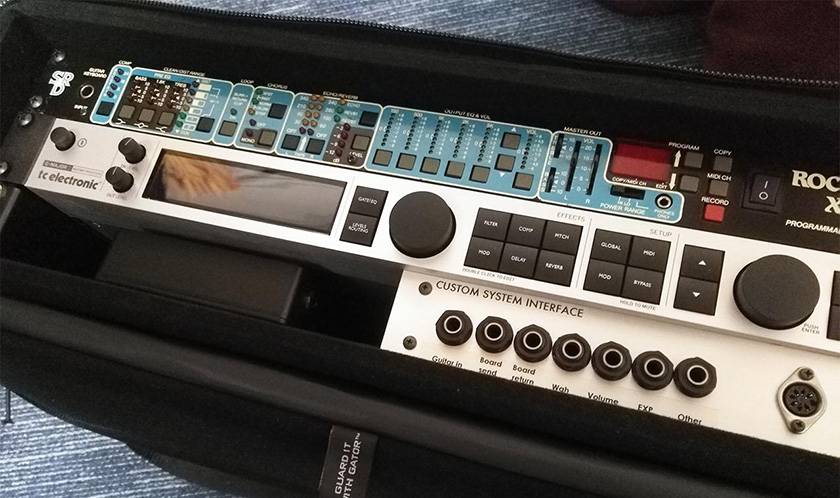
The one at the top is the Rockman XPR
In the 1990s, digital equipment became prominent. The rapid advancement of digital technology led to the widespread use of digital equipment by guitarists. SR&D released the XPR and XPRa, but the popularity of Rockman products waned, and SR&D began to decline.
As music genres diversified, the demand for clear and glassy guitar sounds contributed to the decline of SR&D.
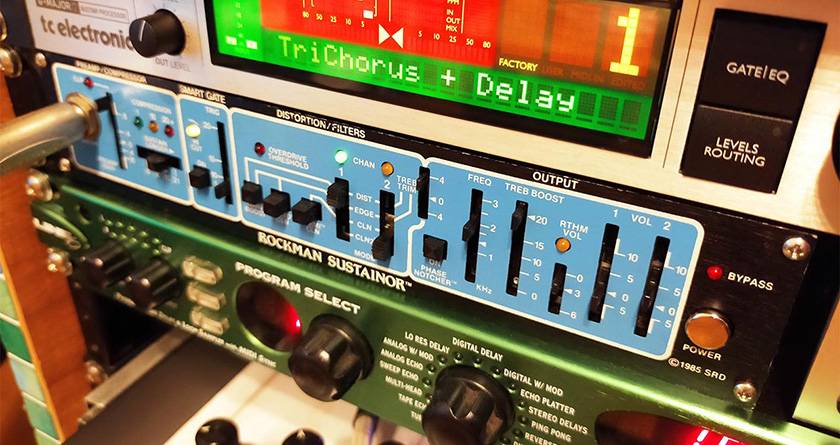
The Rockman Sustainor is placed in the center
However, starting in the 2000s, the reevaluation of analog equipment reignited the popularity of Rockman. In Japan, the continued use of the Sustainor and XPR by B’z’s Takahiro Matsumoto has helped maintain Rockman’s popularity, which continues to thrive without losing its appeal.
Currently, the rights to Rockman products are held by Jim Dunlop, which owns MXR.
Unboxing the MXR MX100!

The color scheme of the case itself gives off a distinct Rockman vibe. The operation is simple: after setting the sliders for Input Gain (Compression) and Volume to your desired positions, just use the two white buttons on the sides to switch the mode and turn the chorus ON/OFF. The straightforward operation is a nice touch.
By connecting a footswitch to the CTRL input, you can switch modes with your feet.
By the way, the user manual recommends using the MXR MX100 as a preamp by directly connecting it to a guitar amp return or monitor speakers. So, when you get your hands on the MXR MX100, don’t just use it as an effect pedal – try using it as a preamp too.
Switch to Toggle Between Mono and Stereo
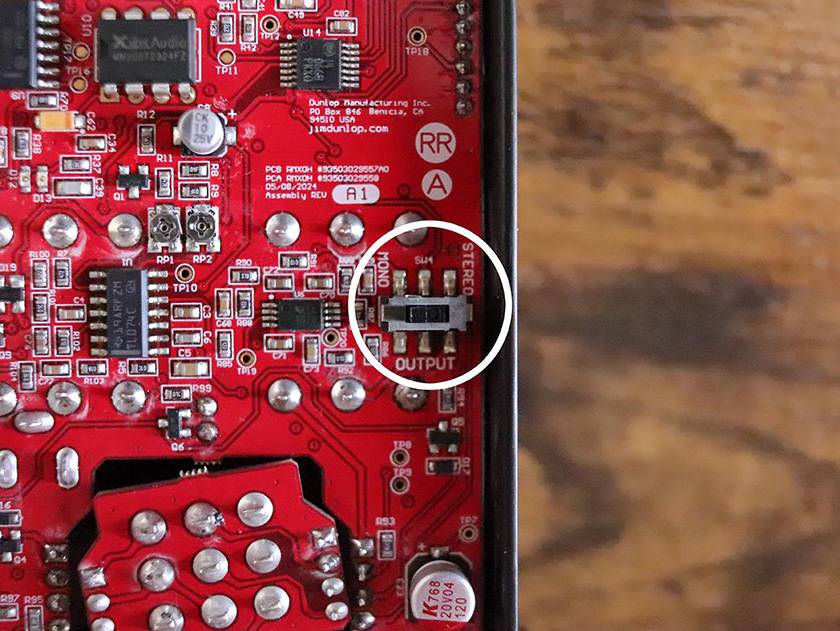
The MXR MX100 features a switch on the circuit board that allows you to toggle between mono and stereo. By default, it is set to mono, but for those using the chorus effect, it’s recommended to switch to stereo. This will let you enjoy a refreshing, wide stereo chorus that will elevate your playing experience.
MXR MX100 Sound Review
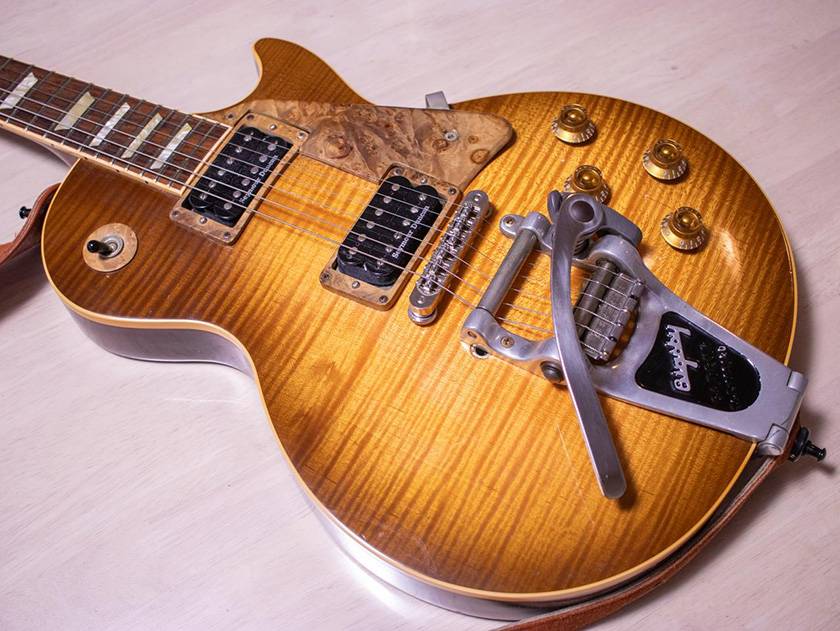
Finally, it’s time for the MXR MX100 sound check. With engineers from SR&D, the company behind the original Rockman products, now working with MXR, expectations are high. Below are the details of the gear used in this review:
Gear Used
- Gibson Les Paul Standard
- Arturia MiniFuse 2
- MXR MX100 (Mono)
No other effects or DAW plugins were used besides the MXR MX100. First, let’s take a listen to the guitar’s raw tone.
■ Raw Tone
For the sound check, the slider positions are fixed regardless of the preset. Keeping the ‘Rockman essence’ in mind, I played with the Input Gain set to MAX. Pay attention to how the sound and volume change with the chorus ON/OFF and between presets.
CLN1 | Midrange-Focused, Prominent Sound
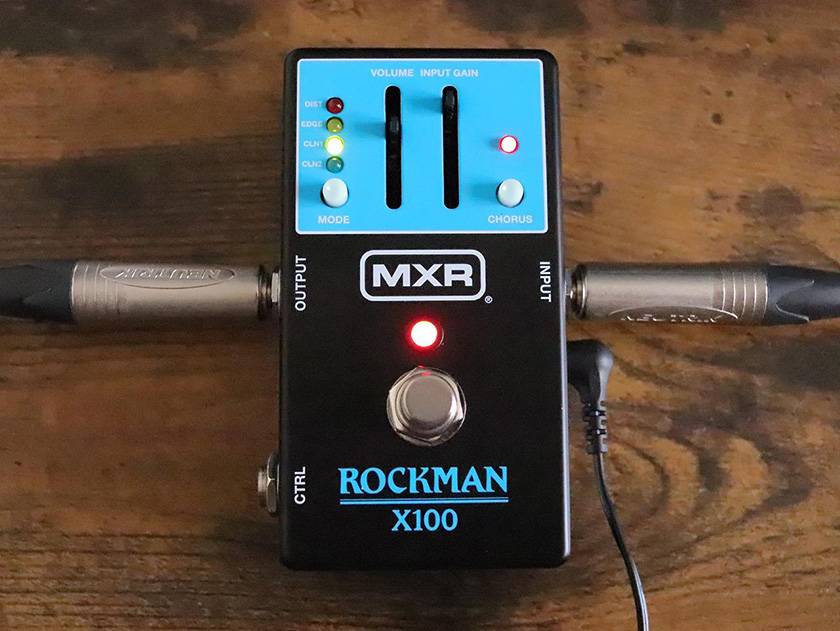
■ CLN1
■ CLN1 Chorus
The CLN1 mode offers a versatile and easy-to-use clean tone, suitable for everything from arpeggios to cutting riffs. The high frequencies are subdued, while the midrange is emphasized. This results in a prominent, clear sound that stands out well. It also pairs easily with external effects, allowing for great flexibility in tone shaping.
CLN2 | The Beautiful Clean Tone that Represents Rockman

■ CLN2
■ CLN2 Chorus
The CLN2 mode is characterized by a wide range and a beautiful, pristine clean tone. Adding chorus enhances the beauty, making it even more striking. It's perfect for those seeking an '80s-style clean tone. Many may associate the sound of Rockman with CLN2.
When using Rockman’s clean tones, I personally tend to use CLN1 for arpeggios and CLN2 for cutting riffs.
EDGE | Deep Crunch That Handles Both Backing and Lead
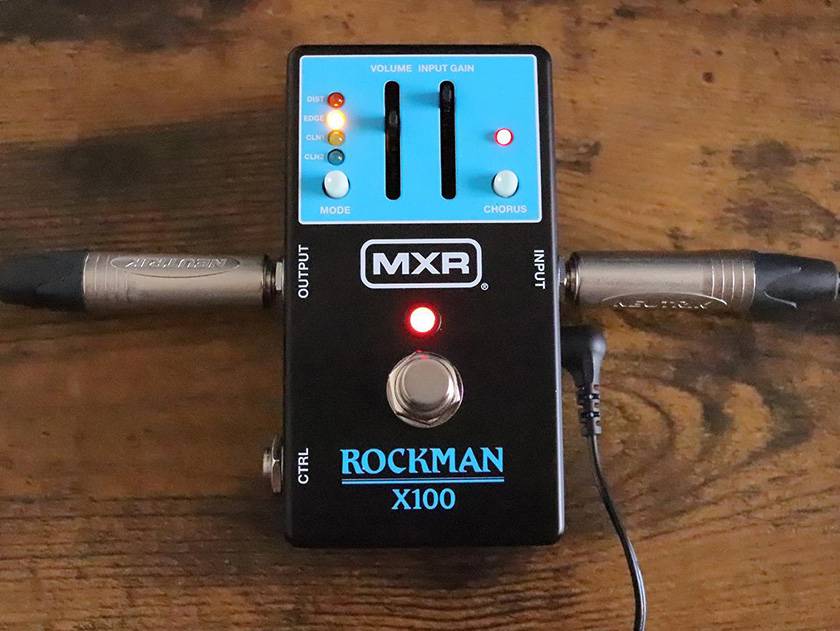
■ EDGE
■ EDGE Chorus
The EDGE mode is the most frequently used on the MXR MX100. It provides a crunchy sound with distortion that has enough depth for both rhythm backing and guitar solos. I find it especially useful when you set up a booster to switch between backing and solo sounds.
DIST | High-Gain Sound with Intense Sustain
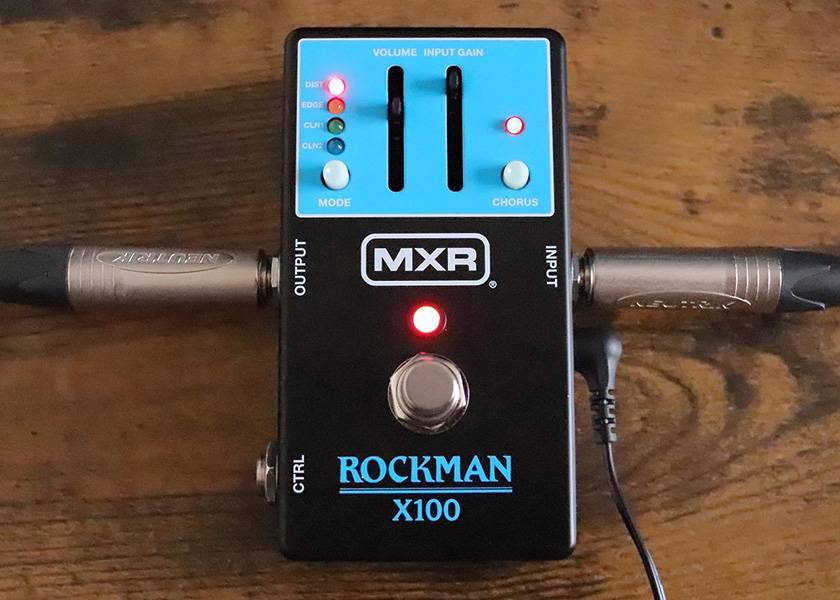
■ DIST
■ DIST Chorus
The DIST mode is the highest gain setting on the MXR MX100. It offers a silky tone with long sustain and is very easy to play. Despite the high gain, it maintains a pleasant, ear-friendly sound with just the right amount of clarity. This mode is perfect for lead guitarists! Adding chorus enhances the nostalgic 80s lead sound.
Recommended to Use with an Equalizer
The MXR MX100, which inherits the distinctive sound of the Rockman X100, offers a unique tone that may be appealing to some, but others might find it a bit difficult to use.
To enhance its versatility, pairing it with an equalizer is highly recommended. By boosting the high frequencies or cutting the low frequencies, you can retain the signature Rockman sound while adapting it to fit modern music styles.
Thanks to its simplicity, the MXR MX100 is a preamp/effect unit that offers plenty of room for experimentation and sonic exploration.
The Ultimate Effect Pedal for Rockman’s Unique Sound
The biggest appeal of the MXR MX100 is how easily it allows you to achieve the iconic Rockman sound.
Considering that vintage gear like the original Rockman X100 and SR&D’s amps and effects are only available second-hand at high prices, the MXR MX100 offers exceptional value.
The MXR MX100 is highly recommended for those who:
- Plan to use it with a DAW
- Want to experiment with Rockman sounds
- Are looking to use a fixed mode for live performances
- Want to increase their sound variation
Are drawn to Tom Scholz’s original vision for the ideal sound, which can be partially captured with the MXR MX100. With the MXR MX100, you can explore a piece of Tom Scholz’s visionary sound design at an accessible price point.
The “sound & person” column is made up of contributions from you.
For details about contributing, click here.





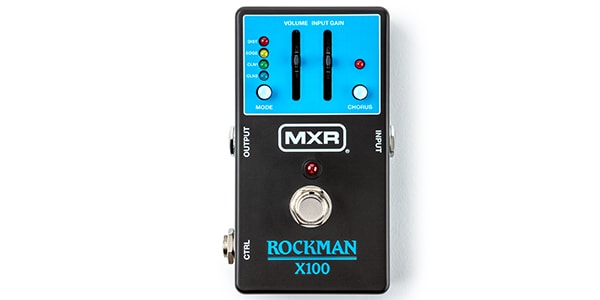







![[Beginner’s Must-See!] How To Choose A Guitar Effects Pedal!](/contents/uploads/thumbs/2/2024/9/20240904_2_28492_1.jpg)
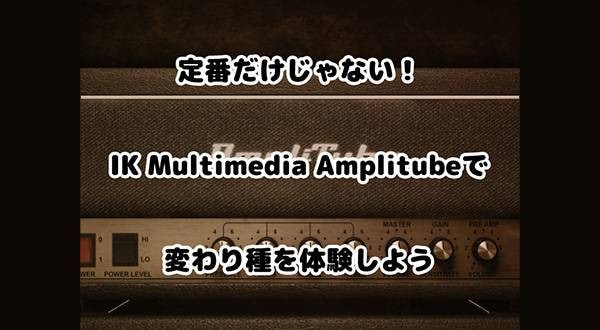
![[For Beginners] Lets Use a Microphone Preamplifier](/contents/uploads/thumbs/2/2023/5/20230523_2_22754_1.jpg)
![[Latest for 2025] The 10 Best Effects Pedals for Guitar Beginners!](/contents/uploads/thumbs/2/2022/5/20220526_2_18129_1.jpg)
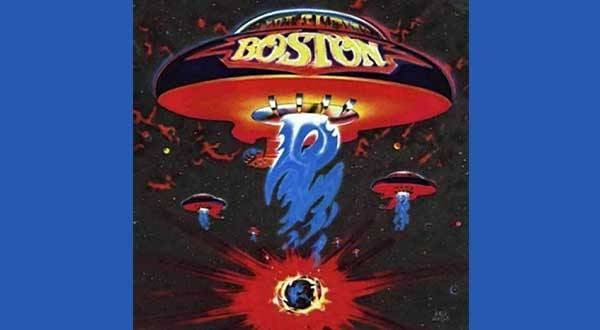
![[Rockman XPR] -A famous effector used by Bz guitarist Tak Matsumoto-](/contents/uploads/thumbs/5/2021/1/20210118_5_12087_1.jpg)
 【初心者向け】エフェクター講座
【初心者向け】エフェクター講座
 あなたのエフェクターボード見せてください
あなたのエフェクターボード見せてください
 エフェクターのつなぎ方
エフェクターのつなぎ方
 エフェクターの種類
エフェクターの種類
 ギター演奏に必要なものは?
ギター演奏に必要なものは?
 ギタースタートガイド
ギタースタートガイド















